Along with investing in, upgrading and repairing facilities, infrastructure and workplaces, appropriate remuneration will be the driving force to attract medical staff to work at grassroots health facilities.
Primary health care system lacks human resources
The situation of medical staff being overloaded with work but not earning enough to cover their living expenses has been going on for a long time in the public health system across the country, especially at the grassroots level. The consequence is that many medical staff continuously submit resignations, causing serious shortages of human resources in medical facilities, making it impossible to ensure health care for the people.
Kien Xuong District, Thai Binh Province currently has two district-level medical units, 33 commune and town medical stations with a total of nearly 500 employees working at public medical facilities. However, if including the District Medical Center and medical stations in the district, there are only more than 30 doctors, much less than the actual medical examination and treatment needs of the people. According to Ms. Bui Thi Tho, Director of Kien Xuong District Medical Center, the shortage of doctors has been going on for many years due to the "powerlessness" of the Center and medical stations. Although recruitment information is regularly posted, recruitment is very difficult. The main reason is that the treatment regime, low income, and working in conditions lacking in facilities have made doctors and medical staff not very interested in grassroots health care.
Thai Binh province currently has 260 commune, ward and town health stations. However, many of them have been degraded and have not been renovated or repaired for many years. Basic medical equipment and machinery have not been replaced for many years, making it difficult to ensure effective treatment. This is also one of the factors that makes it difficult to attract doctors to work.
In Tuyen Quang province, according to statistics from the Department of Health, the whole province currently has 128 commune, ward and town health stations with a total of nearly 700 medical staff, but only 130 of them are doctors. Compared to the actual need for medical examination and treatment, there is a shortage of about 20 doctors at the health stations.
When needed, people who want to access quality medical services have to travel a longer distance to the district health center. Recruiting doctors for the grassroots health system has been very difficult in the past 10 years. The main reason is still the income and benefits are too low, making the lives of doctors quite precarious and not enough to cover expenses.
Ms. Sung Thi Nga in Vang Dan commune, Nam Po district, Dien Bien province, although she has worked for many years as a village midwife, taking care of the health of people in the district, and also taking on all the tasks of population propaganda and family planning. However, each month she only receives more than 500 thousand VND in support for all activities, the allowance is so small that she has wanted to quit her job many times.
After many years of hard work studying in the classroom, doctors all want to work in an environment with adequate facilities and equipment to apply to medical examination and treatment, but this is something that the infrastructure of basic healthcare has difficulty meeting.
According to the report of the Ministry of Health summarizing 10 years (2014-2024) of implementing Decree No. 117/2014/ND-CP, dated December 8, 2014 of the Government regulating the health care of communes, wards and towns, most health stations have a number of staff below the minimum prescribed level (according to Circular No. 03/2023/TT-BYT dated February 7, 2023 of the Ministry of Health, the minimum is 5 people). In 2024, the country will have 869 commune health stations, of which each station has an average of only 2 to 4 people.
The network of village and commune health workers is considered an extension of the health sector, an important factor in health promotion and education, helping people in remote areas access the right to health care; but up to now, the construction of this team still has many shortcomings and difficulties. Most of them take on many tasks but the allowance is too small, not commensurate...
Attracting doctors and nurses to work at grassroots health facilities
Many solutions have been proposed since the situation of medical staff resigning, causing a serious shortage of human resources for grassroots health care. According to Associate Professor, Dr. Phan Le Thu Hang, Deputy Director of the Department of Financial Planning (Ministry of Health), the process of reforming the grassroots health network has been accelerating recently, with many strong promoting factors in accordance with the spirit of Directive No. 25-CT/TW dated October 25, 2023 of the Secretariat on continuing to consolidate, improve and enhance the quality of grassroots health care activities in the new situation.
However, at present, the grassroots health network, although having wide coverage, is not capable of providing effective primary health care according to the new model (ensuring integrated, comprehensive health care throughout the life cycle); the ability to access central and tertiary hospitals in terms of technical expertise in some areas is still limited.
Currently, the Ministry of Health has drafted and is seeking opinions from relevant agencies to complete and submit to the Government for promulgation a new Decree to replace Decree No. 56/2011/ND-CP dated July 4, 2011 regulating preferential allowances according to profession for civil servants and public employees working at public health facilities.
The new decree will adjust the remuneration policy and increase the allowance level to help attract and retain doctors, pharmacists, and nurses with university degrees or higher to work at grassroots health care facilities and in the field of preventive medicine, in order to solve the problem of lack of qualified staff at these health facilities. At the same time, it will help reduce the number of people quitting their jobs, improve the quality of grassroots health care and preventive medicine, and help people access quality health services.
The Ministry of Health proposes preferential allowances according to occupations including: 70% for civil servants working in special fields such as testing, treatment of leprosy, tuberculosis, mental illness, HIV/AIDS and group A infectious diseases; 60% for those working in fields such as other infectious diseases, 115 emergency, border quarantine, chemotherapy, nuclear medicine; 50% and 40% for jobs such as anesthesia, resuscitation, diagnostic imaging, public health, etc.
In addition, investment in construction and upgrading of facilities, medical equipment and machinery, and creating the best working environment at the grassroots level are also the driving forces to attract doctors and medical staff to work. Typically, the project "Investment in construction and development of the grassroots health service delivery system" implemented in 13 provinces and cities has brought many positive results.
This is a project using capital from the World Bank in Vietnam and donors, implemented from 2020 to the end of 2024, contributing important resources to the goal of improving the quality and efficiency of using primary health care services.
The project has invested in the construction of 478 grassroots medical facilities, including 464 medical stations (141 newly built, 323 repaired) and 14 medical centers. In addition, 1,703 medical stations have been provided with equipment. Many provinces and cities that have received investment said that the problem of shortage of human resources for grassroots medical facilities has been partly resolved when medical staff are given favorable working conditions in terms of facilities and adequate equipment.
In recent times, some localities have used funds mobilized from many sources, actively invested in building new, upgrading facilities and purchasing equipment for grassroots health care, encouraging and attracting doctors and nurses to work. For example, in Quang Ngai province, from 2017 to present, more than 50 health stations have continuously invested in building new, upgrading facilities and purchasing medical equipment, with a total cost of 220 billion VND.
According to Mr. Pham Minh Duc, Director of the Department of Health of Quang Ngai province, the increased investment in synchronous facilities and equipment for medical facilities has greatly contributed to improving the quality of health care for the people; gradually completing the infrastructure, creating a synchronous and quality health system, attracting qualified medical human resources to work locally.
With the above suitable benefits and favorable working environment, we hope to attract doctors and nurses to work here, solving the problem of human resource shortage for the grassroots health system.
Source: https://nhandan.vn/lam-the-nao-de-thu-hut-bac-si-ve-tuyen-co-so-post878687.html







![[Photo] National Assembly Chairman Tran Thanh Man attends the Party Congress of the Committee for Culture and Social Affairs](https://vphoto.vietnam.vn/thumb/1200x675/vietnam/resource/IMAGE/2025/5/11/f5ed02beb9404bca998a08b34ef255a6)


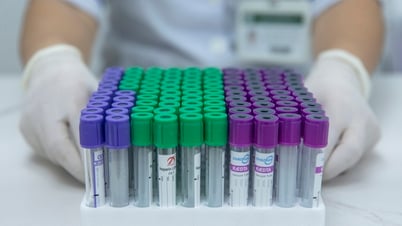
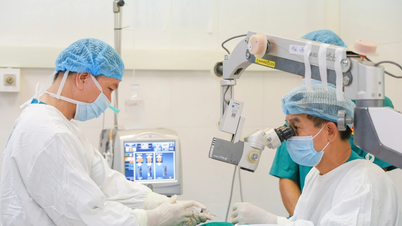

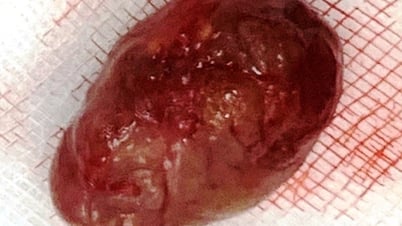







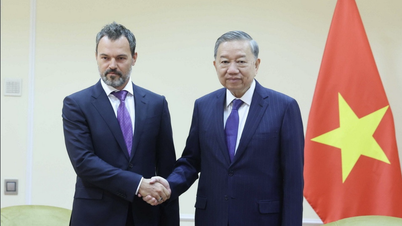
![[Photo] National Assembly Chairman Tran Thanh Man attends the Party Congress of the Committee for Culture and Social Affairs](https://vphoto.vietnam.vn/thumb/402x226/vietnam/resource/IMAGE/2025/5/11/f5ed02beb9404bca998a08b34ef255a6)
![[Video] Vietnamese primary school students are among the top in Southeast Asia in Math, Reading and Writing](https://vphoto.vietnam.vn/thumb/402x226/vietnam/resource/IMAGE/2025/5/11/12fcdc611db44eeaaa1559054e4c8e9a)
![[Photo] Discover the beautiful scenery of Wulingyuan in Zhangjiajie, China](https://vphoto.vietnam.vn/thumb/1200x675/vietnam/resource/IMAGE/2025/5/11/1207318fb0b0467fb0f5ea4869da5517)
![[Photo] National Assembly Chairman works with leaders of Can Tho city, Hau Giang and Soc Trang provinces](https://vphoto.vietnam.vn/thumb/1200x675/vietnam/resource/IMAGE/2025/5/11/c40b0aead4bd43c8ba1f48d2de40720e)












































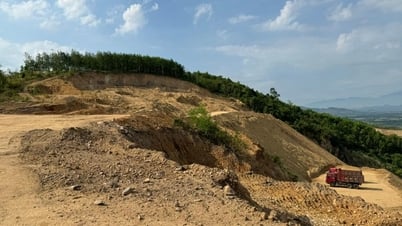








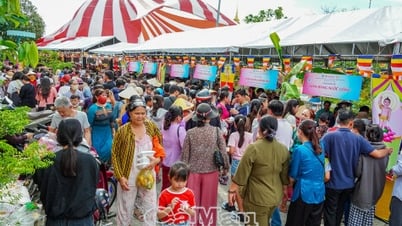










Comment (0)